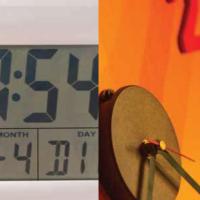Looking for research and development projects made possible through DEED grants and scholarships? Check out the DEED Project Database.
Trying to find information about specific public power utilities? If you are member, check out the Public Power Directory.
The Electric Power Research Institute released findings from its three-year study of potential impacts of high-altitude electromagnetic pulses on the electric transmission system, along with options to mitigate those impacts.
Several public power utilities have been recognized by Forbes and Statista, an analytics company, as among America’s best employers for 2019.
The evolving electric utility business environment places special demands on public power governance. However, public power veterans and policymakers agree that the more things change, the more they remain the same. Competitive Forces Reshape the Electricity Business “The pace of change in the
Women have long played a prominent role in public power leadership. Under its strategic initiative to “support workforce planning,” the American Public Power Association provides many networking and professional development opportunities for women to grow and contribute in public power. We asked
“The first and most important choice a leader makes is the choice to serve, without which one’s capacity to lead is severely limited.” –Robert Greenleaf It is incredible that today, we have thousands of homes in the United States that have never been connected to electricity. And 75% of those homes
After first focusing on the cost saving benefits of advanced metering infrastructure, utilities are using the infrastructure and data AMI gathers in multiple ways, according to a report from the U.S. Department of Energy.
I recently had the sobering experience of understanding what a customer can go through in a disconnection of electric service for non-payment. I was visiting my father in the Midwest...
This series of essays presents a set of perspectives from thought leaders in rate design, supplemented by examples of how public power utilities are reshaping their rate design strategies to...
The Sacramento Municipal Utility District recently signed a 30-year power purchase agreement with Lendlease Energy Development for the output from a 160-megawatt solar project on the site of the decommissioned Rancho Seco Nuclear Generation Station.


